
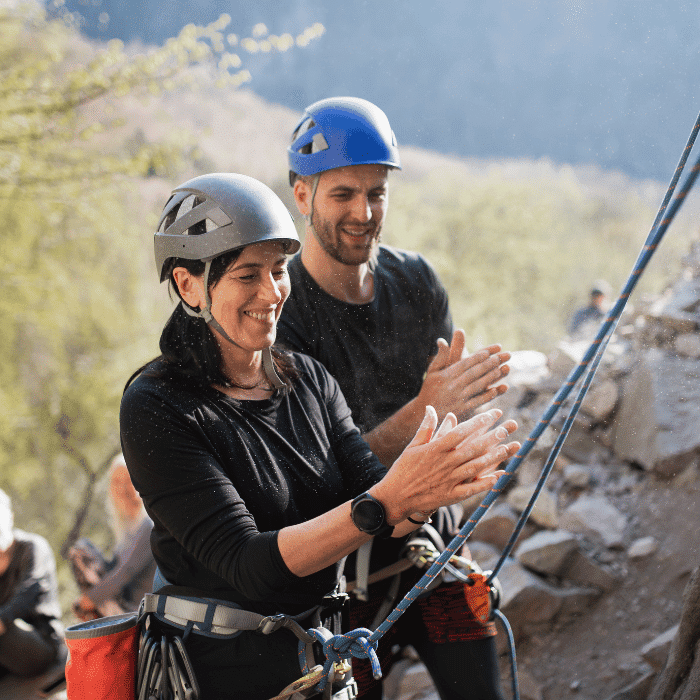
Rock climbing is a rapidly growing sport, yet nutrition recommendations for climbers are limited. However, proper fueling can make all the difference in your rock climbing performance, recovery, and injury risk!
As an avid climber, I’ve always wondered how can I fuel my body correctly to climb my best? If you’re reading this article, you might have wondered the same.
Rock climbers are essentially strength and power athletes. Therefore, we can apply many nutrition guidelines for strength and power athletes to climbers (with a few differences)!
In this article, I will discuss foundational nutrition principles for two types of climbing: Bouldering and rock climbing (sport and trad climbing). I will address mountain climbing (mountaineering) nutrition in a future blog!
Read on to learn how to up-level your rock climbing nutrition so you can feel and climb your best!
Please note that I am an affiliate for some of the products I’ve linked to in this post. If you click the link here and make a purchase, I may earn a commission at no extra cost to you.

Briefly, I will differentiate the types of climbing discussed in this article: Bouldering, sport climbing (top-rope and lead climbing), and “trad” climbing (“trad” is short for “traditional” climbing). My intention is not to explain something to you that you already know 🙂but to lay out the types of movement involved in each form of climbing because of the nutritional implications.
Bouldering is climbing up to six meters (20 feet) high without a rope or harness. Typically, a combination of approximately 10 moves are completed within four minutes. Bouldering involves very short bursts of activity and powerful, dynamic movements.
Sport climbing can be subdivided into lead and top-rope climbing.
While some climbers may argue that top rope climbing isn’t sport climbing, I think it fits perfectly under the sport climbing umbrella. Top-rope climbing is climbing while securely attached to a rope on a fixed anchor at the top of the route. Many climbers climb on top ropes or auto-belays at times.
Lead climbing involves a climber threading a rope through fixed anchors along a route as they ascend the route. It requires coordination, dexterity, and a significant amount of energy! Top-rope and lead climbing typically involve climbing for longer than 4 minutes.
“Trad” climbing is a form of free climbing where the lead climber places protection along the climbing route as they ascend. Trad climbers often tackle BIG routes and may be on a wall for hours or even days. Trad climbing requires an elegant mixture of strength, dynamic and powerful movements, dexterity, and endurance. Trad climbers need to fuel for strength, power, and endurance.
No matter your preferred type of climbing, rock climbing is demanding on your body. We need to fuel our bodies properly to feel and perform our best.
Why does nutrition matter for climbers? Here are a few reasons:
Your nutritional needs as a climber will vary depending on your training goals, your training plan, the frequency of your training, the difficulty level of the climbs you’re performing, and other forms of physical activity that you perform in addition to climbing (such as resistance training, yoga, or aerobic exercise).
How do you know you need to change your rock climbing nutrition? Here are a few key signs that your nutrition might need some work:
However, there are some basic nutrition foundations that all climbers should prioritize. Let’s discuss each of these nutrition foundations in turn.
Bouldering and sport climbing (lead climbing, top roping, and trad climbing) involve short-duration, high-intensity anaerobic exercise. In some cases, these sporadic bouts of intense exercise can occur over a prolonged time frame, such as climbing multiple routes at a crag over a few hours or doing an all-day multi-pitch trad climb.
Carbohydrates are the primary fuel source during short-duration, intense, anaerobic activity, so you’ll want to fuel appropriately with carbs before, during, and after climbing.
The limited research on rock climbing nutrition estimates that climbers need 3-7 g of carbohydrates/kg body mass (BM)/day. For a 120 lb (54.4 kg) climber, this comes to 163.2-380.8 grams of carbs daily.
This is a BIG range, so you’ll need to experiment with your carbohydrate intake to determine what works best for you. Honestly, in my practice, I have found that a range of 150-250 grams of carbs/day is appropriate for many climbers, though there will always be exceptions (people who need fewer or more carbs)! (Source)
Here are examples of standard serving sizes of carb-containing foods and the amount of carbohydrates in grams per serving of each food:
Some climbers eat any and all carbs – bread, pasta, cereal, crackers, croissants, candy – and while there’s a time and place to indulge in these foods in your diet, eating these foods as a mainstay of your carbohydrate intake is a problem. Here’s why:
Refined carbs are carbohydrates that have gone through a manufacturing process. This manufacturing process may turn the carbs into flour and flour-based foods like pasta, bread, and crackers. Refined carbs also include sugars, such as table sugar.
Refined carbs are rapidly digested in the small intestine. These rapidly-digested carbs can initially spike your blood sugar and subsequently cause a precipitous drop in blood sugar. When this kind of blood sugar fluctuation happens frequently, it can generate energy fluctuations and inflammation.
Energy fluctuations caused by high blood sugar variability may negatively affect your climbing performance.
However, research also shows that high blood sugar variability, defined as oscillations in your blood glucose throughout the day, can drive inflammation.
Studies suggest that inflammation caused by high blood sugar may damage tendons and joints, making you more susceptible to injuries and even triggering arthritis! This is not ideal if you’re a climber looking to prevent injuries! (Source, Source)
The key is to choose carbs that support balanced blood sugar and to eat them with protein, fiber, and healthy fats to create a balanced blood sugar response.
Whole-food carbs support a far more balanced blood sugar response than refined carbs. Whole-food carbs include sweet potatoes, white potatoes, root vegetables, whole fruit, and legumes.
I want to emphasize this again: Carbohydrate restriction is not ideal for climbers because, from a physiological perspective, you need carbs to fuel your climbs! If you eat fewer carbs than optimal for your body, you may feel flat and lethargic on climbs. The key is to choose carbs that support a balanced blood sugar response most of the time, so you can keep your blood sugar and inflammation in check.
Do you need to figure out how many carbohydrates you’re eating now? Consider tracking your food for several days in a food-tracking app to find out! My preferred food-tracking app is called Cronometer (no affiliation). It provides abundant nutritional information by tracking calories and macronutrients (protein, carbs, and fats) and covers numerous micronutrients, essential fatty acids, and dietary fiber.
Protein isn’t a significant source of energy for your body while climbing. However, it is vital for the structure and function of nearly every system in your body, including your musculoskeletal system.
Under-eating protein may make you more susceptible to injuries and make it hard to build muscle and adapt to your climbing training. In other words, protein is a vital part of your rock climbing nutrition plan!
In my nutrition practice, I recommend aiming for a protein intake of 20-25% of calories. In my experience, many athletes (including climbers) need to eat more protein to optimally support their bodies. For example, a climber eating 2,200 calories/day would want to consume 110-137.5 grams of protein daily.
I recommend distributing your protein intake evenly across your daily meals rather than eating a ton of protein at one meal and a little protein at your other meals. Research suggests that an evenly distributed protein intake may be especially important for supporting muscle mass in older adults; however, I have found an evenly-distributed protein intake to be beneficial for many young athletes too. (Source)
Healthy fats should comprise a foundational part of your diet. While fats are not a significant energy source for climbers, eating enough dietary fat is crucial for supporting satiety, balanced blood sugar, hormones, and brain function.
Choose healthy fats such as:
Omega-3 fatty acids from seafood may be beneficial for reducing inflammation and muscle soreness and supporting exercise recovery. (Source)
Inflammatory fats, on the other hand, should be avoided if your goal is optimal climbing performance and recovery. The primary inflammatory fats we want to avoid are industrial seed oils.
Industrial seed oils (often referred to as “vegetable oils”) are the oils expressed from oilseeds, including canola (rapeseed), corn, cottonseed, grapeseed, safflower, soybean, and sunflower oils.
Industrial seed oils are recent additions to the human diet (we only began consuming them in significant amounts in the 20th century), and research suggests that consuming these oils drives inflammation and, possibly, chronic diseases like cardiovascular disease. (Source)
Micronutrients are vitamins and minerals that are needed by the body in small amounts, but that have a profound impact on your ability to create cellular energy to fuel exercise and recovery, among many other functions.
Vitamin D is crucial for skeletal muscle function, strength, and balance. A low vitamin D level may compromise your athletic performance and increase your risk of musculoskeletal injuries. (Source, Source)
Our bodies can make vitamin D from UVB light exposure from the sun; we also can consume small amounts of vitamin D through whole foods, such as fatty fish. However, in my clinical experience, I’ve found that many people are vitamin D deficient. It’s simply too hard for most people to get enough sun exposure or eat enough vitamin D-containing foods to meet their vitamin D needs.
You should maintain a vitamin D level between 40-60 ng/mL. Talk with your doctor about measuring your vitamin D level, or work with a sports nutritionist to determine your vitamin D needs.
Climbers need to stay on top of their intake of several micronutrients, including B vitamins and vitamin D. B vitamins help your body convert carbohydrates, protein, and fats into fuel. Without enough B vitamins, your body cannot make sufficient energy to fuel your climbs, let alone for your body to function optimally.
An in-depth discussion of micronutrients is beyond the scope of this article, but I plan to dive deeper into this topic in future articles!
How much should you eat as a climber? There’s no easy answer to this question. Your energy needs as a climber depends on many factors, including age, height, weight, lean body mass, sex, activity level, and health goals.
However, one fact holds true for all climbers: You must eat enough calories to support your training and overall health. Restricting calories can cause significant problems for climbers, mainly if calories are restricted for an extended period.
A sports nutritionist can help you determine an optimal personalized calorie intake. In the meantime, a total daily energy expenditure (TDEE) calculator can help you approximate your calorie needs.
In addition, here are some interesting figures I’ve pulled from the scientific literature:
Two hours before your climbing session, eat a meal that provides a balance of protein, carbs, and fat. Aim for a 2:1 to 1:1 ratio of carbohydrates to protein to keep your blood sugar balanced; this way, you’ll have ample energy throughout your climbing session and avoid energy fluctuations that can compromise your performance.
If your last meal was more than 2 hours before your climb, “top off” with a snack that provides 15-20 grams of carbs and 15-20 grams of protein.
During a climb, consume 20-30 grams of carbohydrates per hour to replenish your glycogen stores and keep up your energy. Try to consume carbohydrates primarily through whole foods. Here are some whole-food carbohydrates that are easy to bring to the indoor climbing gym or the crag:
You’ll also want to ensure you’re hydrating properly between climbs. Please see the “Hydration” section below for more information about hydration for climbers.
After your climbing session, eat a meal that again balances 2:1 to 1:1 carbs to protein. Occasionally, after a particularly strenuous climbing session, consuming a 3:1 ratio of carbs to protein helps replenish spent glycogen. Eat at least 30-40 grams of protein within 30 minutes of finishing your climbing session.
Pro tip: If you’re driving a while to get to the crag and plan to climb for over 90 minutes, bring a meal with you that you can eat afterward. This way, you won’t be hungry on your way home from the crag and can get a head start on refueling your body!
Dehydration may significantly impair your climbing performance. Preliminary research indicates that better hydration before a climb leads to better climbing performance. (Source)
A good baseline target for water intake is drinking half your body weight in ounces daily. Then, you’ll need to account for your hydration needs while climbing on top of that.
Researchers estimate that fluid intakes of ~250 mL/hr of water or sports drink are sufficient for preventing dehydration. However, fluid intake needs are highly variable based on your body size, sex, age, the environment in which you are climbing (humid, hot), and your sweat rate. In short, it takes some experimentation to figure out how much fluid you should drink when climbing.
Determine how many hours you’ll be out climbing (account for the time you spend resting and belaying between climbs) so you can calculate your fluid needs.
Higher altitude climbs (such as the climbs we can do here in Colorado!) may require higher fluid intakes of 3-5 Liters/day. (Source)
Consider adding a low-osmolality sports drink mix such as Skratch Labs Hydration Sports Drink Mix for climbing sessions lasting over 90 minutes or in a hot, humid, or high-altitude environment.
Some climbers consciously restrict their fluid intake so they can avoid feeling the urge to urinate during a climb. This is NOT a smart idea.
Dehydration can compromise your athletic performance in many ways, so you do not want to be dehydrated while climbing. Instead, the key is to practice your hydration strategy so you can learn how much to drink and time your bathroom breaks strategically before and after climbs.
Supplementation with beta-alanine may benefit climbers, but we don’t have sufficient research yet to draw any definitive conclusions.
Beta-alanine is a non-essential amino acid that has been shown to improve sports performance. Inside your body, beta-alanine combines with another amino acid called histidine to form carnosine, which has anti-fatigue effects and may be particularly helpful for strength and power athletes (like climbers)! (Source)
If you are low in vitamin D or B vitamins (the importance of these nutrients for climbers is discussed under the “Micronutrients” section of this article), you may need to supplement with these nutrients.
When purchasing supplements, I recommend going through a reputable professional-grade supplement brand.
We demand a lot from our bodies as rock climbers. Whether you are a competitive boulderer, an ambitious lead climber, an avid top-roper, or an adventurous trad climber, food is fuel for your body. When you fuel your body properly, you can climb strong, recover smoothly, and feel and function your best on and off the climbing wall!
If you need help optimizing your rock climbing nutrition, I am accepting new clients in my nutrition practice and would love to help! I work with climbers of all skill levels to up-level their nutrition and climbing performance through a detailed nutrition assessment, personalized nutrition recommendations, functional lab testing, and meal planning.
Would you like a super convenient, easy-to-read, PDF version of this comprehensive blog? Grab your PDF copy of Climbing Nutrition: How to Fuel Your Body to Climb Your Best!
The content provided on this nutrition blog is intended for informational and educational purposes only. It is not a substitute for professional medical advice, diagnosis, or treatment. Always seek the advice of your physician or other qualified health provider with any questions you may have regarding a medical condition. Never disregard professional medical advice or delay in seeking it because of something you have read on this blog.
The information and recommendations presented here are based on general nutrition principles and may not be suitable for everyone. Individual dietary needs and health concerns vary, and what works for one person may not be appropriate for another.
I make every effort to provide accurate and up-to-date information, but the field of nutrition is constantly evolving, and new research may impact dietary recommendations. Therefore, I cannot guarantee the accuracy or completeness of the information presented on this blog.
If you have specific dietary or health concerns, please consult a qualified nutritionist or another healthcare professional for personalized guidance.
I empower others through nutrition to conquer their mountain adventures, drawing from my own experiences.
With a background in Biomedical Science and an M.S. in Human Nutrition, I’m a Certified Nutrition Specialist and Licensed Dietitian Nutritionist. My journey in functional medicine has equipped me to work alongside athletes and tackle complex health cases. As a passionate trail runner, backcountry skier, and backpacker, I strive to support others on their paths to peak performance and well-being.


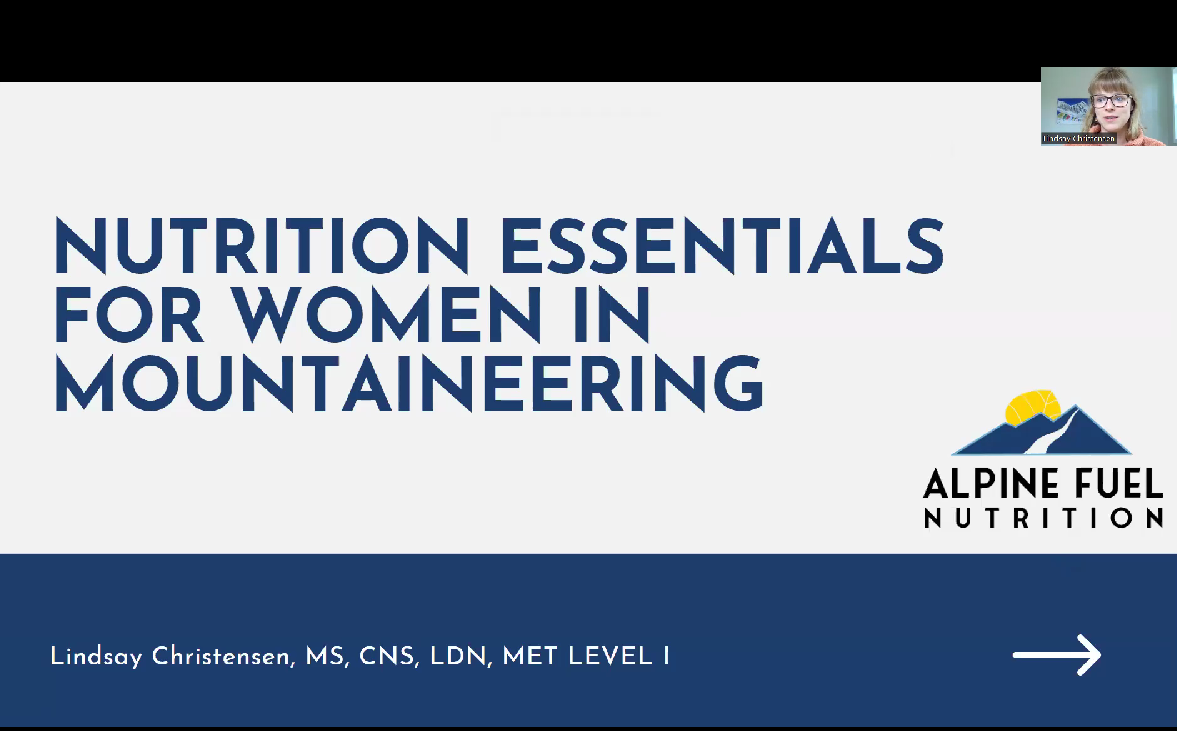


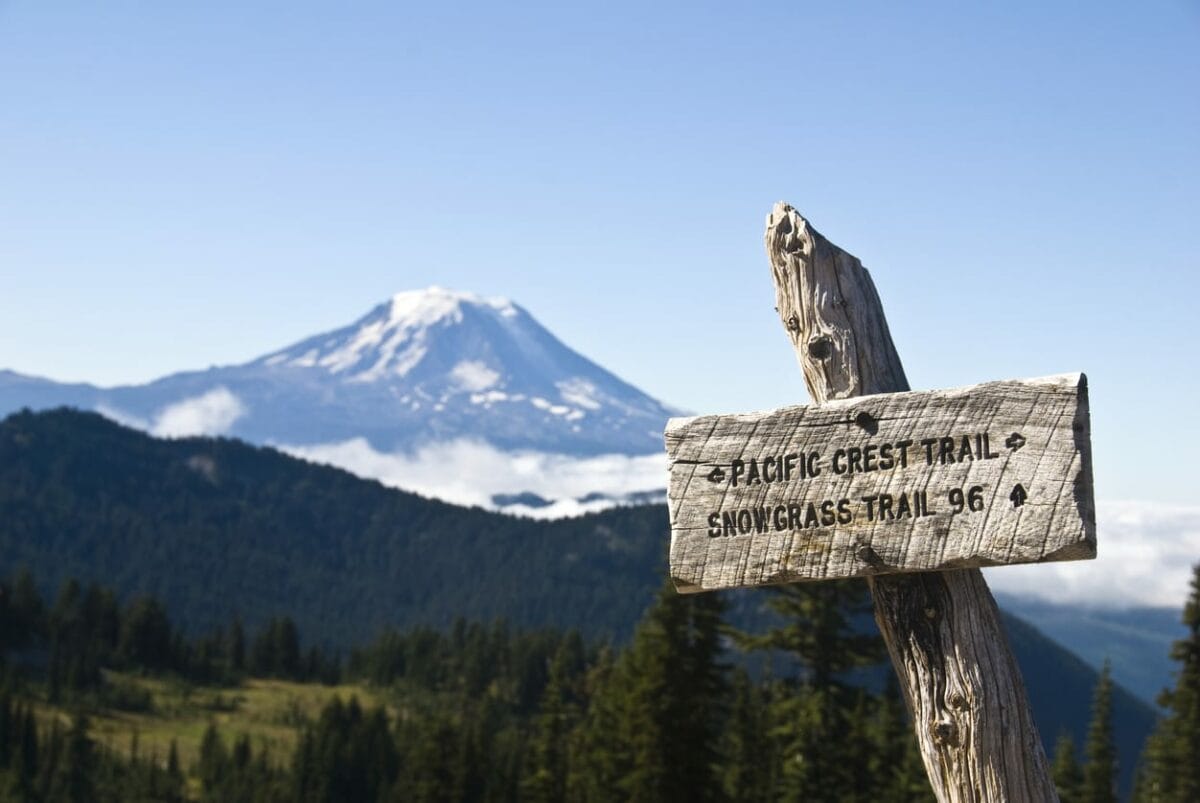
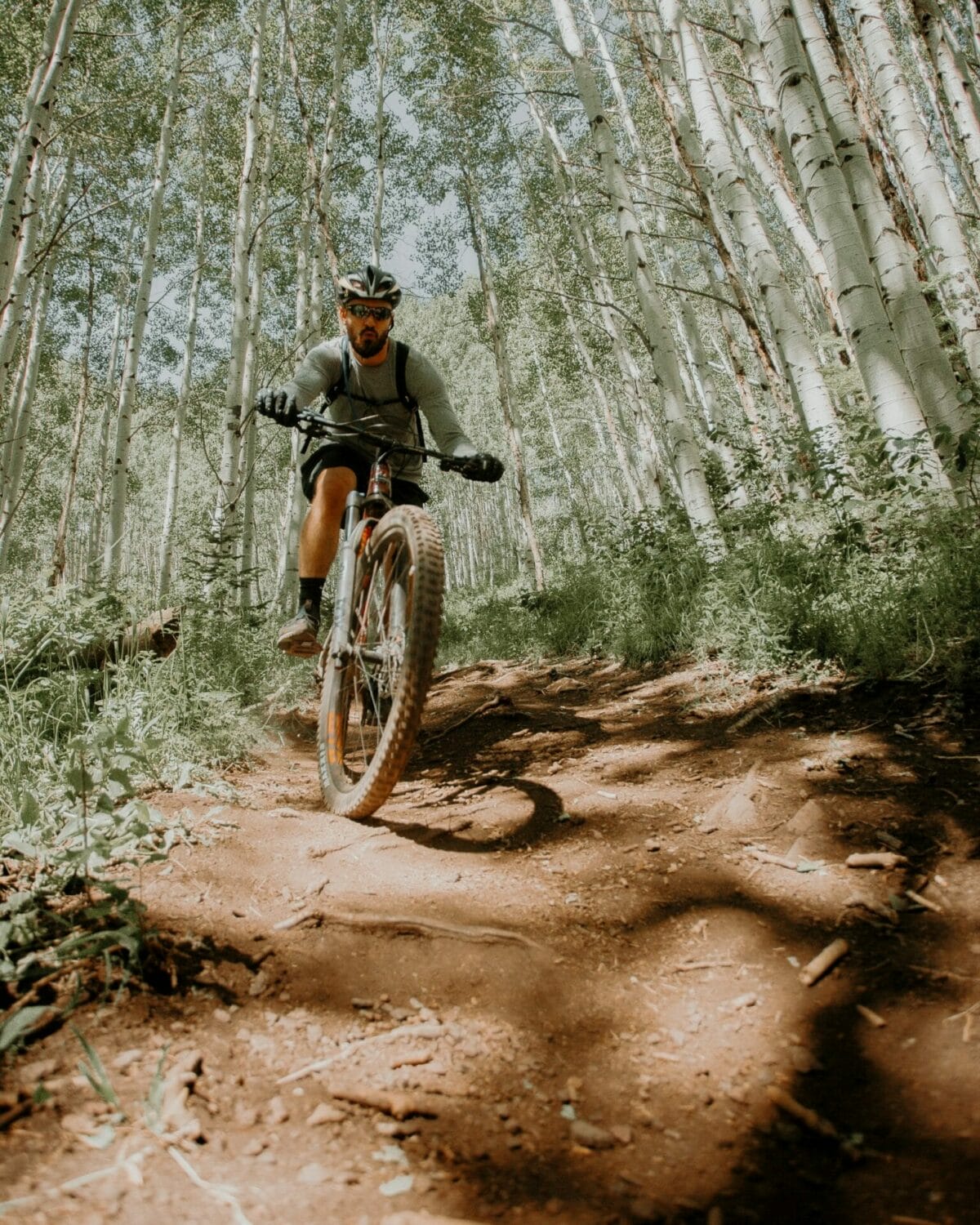
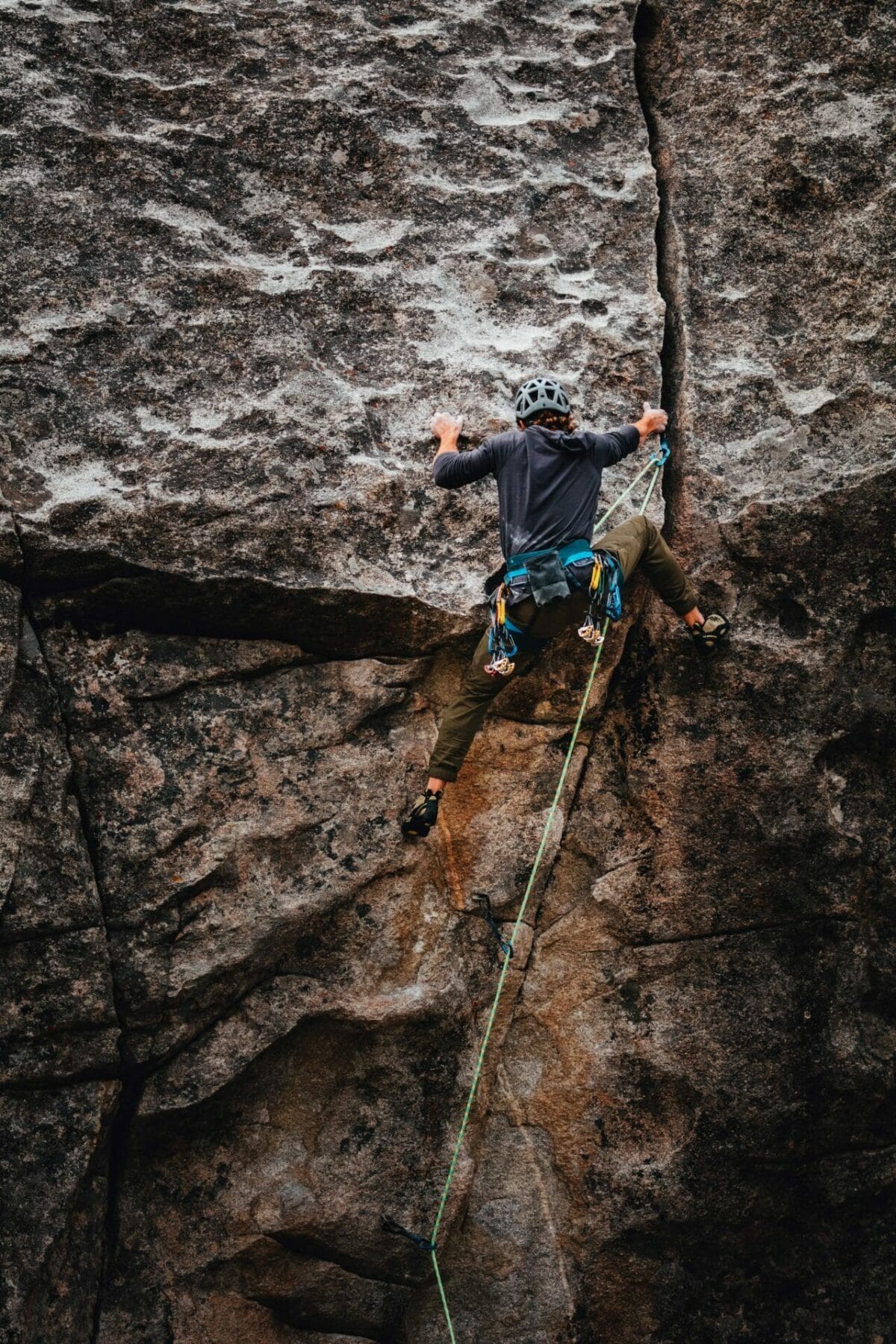
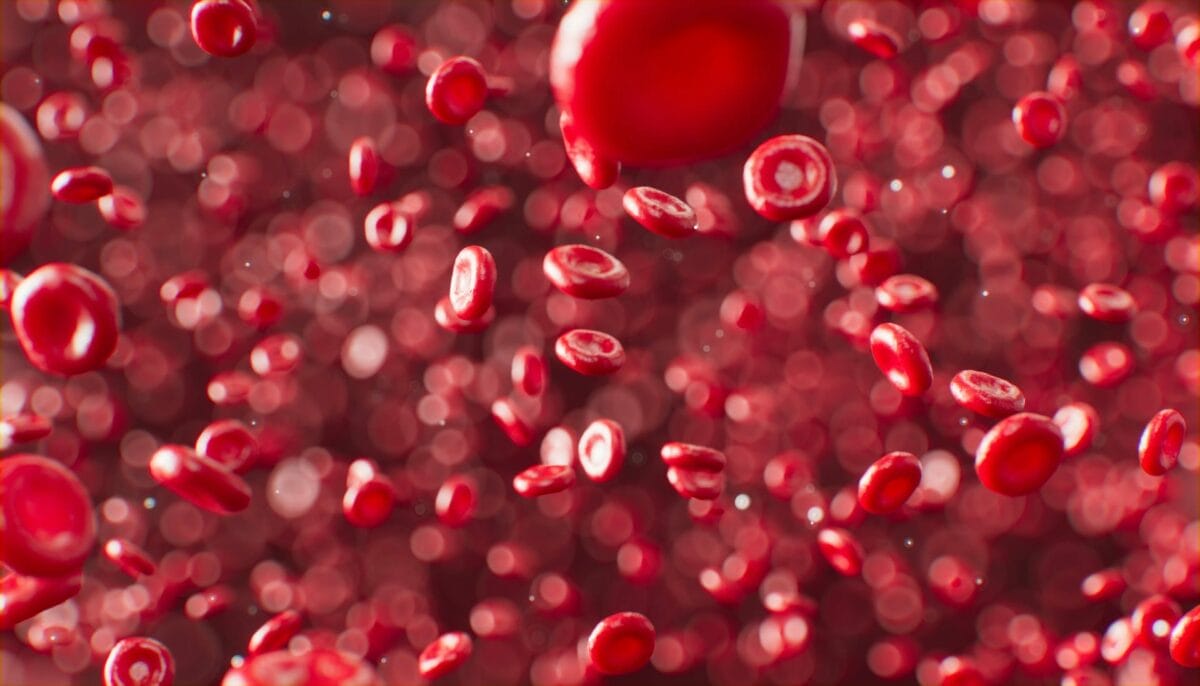
Sign up for updates that come right to your inbox.